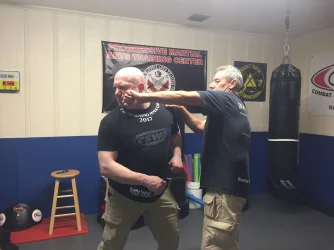Care to describe? I cannot say that my experience with Tracy kenpo bears that out, but maybe I’m just slow.
So I didn't read through the blurbs underneath each headline, but I'm using the below link just as an example of the main 'tenants' that I learned in ken/mpo (with the exception of the animal stuff which I believe is SKK specific, and the focus on discipline/respect which I have a feeling is more school-based than style-based). The exception is rules 9 and 10. Keep in mind that the below, both in reference to ken/mpo and to weapons is from my own experience, not a scholarly standpoint. YMMV
10 Kenpo Laws Every Martial Artist Should Know
1: CIrcle beats line-line beats circle is something that was drilled into me. I find that it works well in terms of getting a hit in, but sometimes having to switch, either with you hand, body or footwork, steals away some of the strength involved in the strike. This matters much less when weapons are involved, making it more useful then.
2: Strike first. Something else that I learned which I've always assumed was a leftover from karate. But that first strike matters a lot, and when weapons are involved it matters even more (with the caveat strike
alone first. Doesn't do much if they nab you half a second later. The idea is to strike first either somewhere they can't counter, or strike first in a way that allows you to escape).
3: Multiple strikes. Again something that is seen in just about any style of ken/mpo you look at. Most of the time there are too many strikes, IMO, and that focus can take away the effectiveness of individual strikes. But being able to strike not a lot, but quickly (which is the underlying thing that should be being taught), is more useful for weapons than getting your full power in each strike (depending on the weapon. Most weapons that I've practiced with this is true, but not all of them). Keep in mind that the strikes should be actual strikes, not just flailing, which I see in a lot of kenpo, but if it's being taught properly that skill carries over pretty easily.
4: Targets. Something I always felt my instructors spent more time on then necessary-I don't really care where on the torso or head I'm hitting, but they seemed to care a lot. Again targets seems more important with weapons, when you are aiming for areas that prevent them from using their own weapon, or trying to get blood to squirt, or hitting a target that the weapon will hit well in general.
5: Kicking. I had to read the blurb for this one because it confused me. But I was also taught kick low, not high (even though this was contradicted by high kicks in techniques). Seems less related at first, until you think about how important mobility is for weapons fighting, and a high kick can mess with that.
6: No Block. I did learn blocks, and was taught to use them as strikes. Read this blurb to for clarification, they seem to be saying that you don't block in kenpo. Not what I've learned, and also not what I've learned in weapons fighting (depending on the weapon you may be blocking with a weapon as well. So this one doesn't seem to translate IMO.
7: Yielding and redirecting. Fits more than no block for my ken/mpo experience. Also is something that seems to be more important in weapons. In striking you can take a bit of abuse and block the important areas. In weapons you tend to want to manipulate the others flow to get your own strike in.
8: Mobility. Definitely something I learned in kempo, although I don't remember it being as big of a deal in kenpo. I do remember that I was taught that structure is important, and stances were meant as transitional periods, that you should always be moving between. In basically every weapon/weapon style I've tried mobility is the most important thing.
Adding my own 9th: Escape. I was always taught that the main goal is escape and/or debilitation if you cannot escape. Everywhere where I've learned weapons I've been taught this as well, but not so much in other unarmed styles I've trained.

